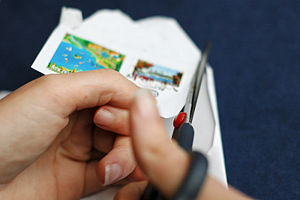
A guide to the basics in stamp collecting.
How to Soak Stamps off an Envelope
Edited from Wiki-Help
Many used postage stamps need to be removed from the envelope. A bowl of warm water and scissors are needed, and ordinary paper towels laid flat on a cookie sheet for the drying process. Press dry stamps between the pages of old phone books.
|
|
Decide whether the stamp should be removed from the paper. Some stamps are more valuable if they are kept on the envelope. An old stamp may be worth a few dollars by itself, but may be worth many times that in the historical context of the envelope that bears it.
|
 |
Cut stamps off the corner of the envelope with some scissors |
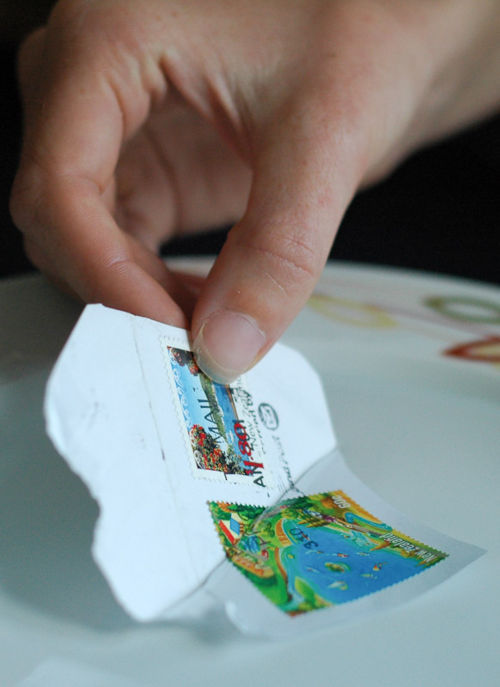 |
Place the cut corner in bowl of warm water and wait 10+ minutes. Use cold water if you are worried that the ink might run. In the past some stamps were manufactured so that soaking would ruin the stamp; this prevented people from illegally reusing them on new mail.
|
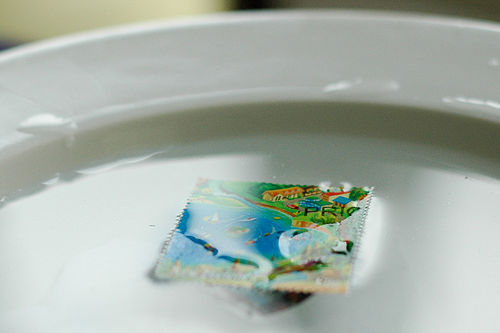 |
Most of the stamps will float off, so put them on the blotter of paper towels face down. Do this carefully so that the stamps do not tear or crease. Some stamps require coaxing to come off the paper, esp. the newer "peel and stick" kind. I sometimes add a single drop of washing up liquid to the “peel and stick” stamps to help loosen the gum.
|
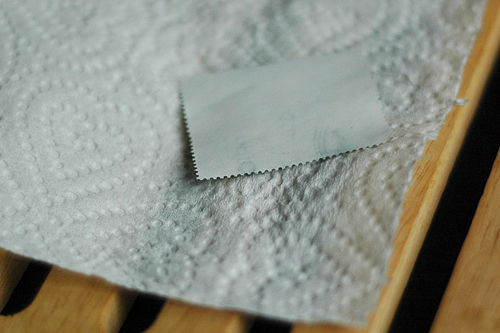 |
Put the cookie sheet of stamps in a dry place (such as the unheated oven) overnight.
|
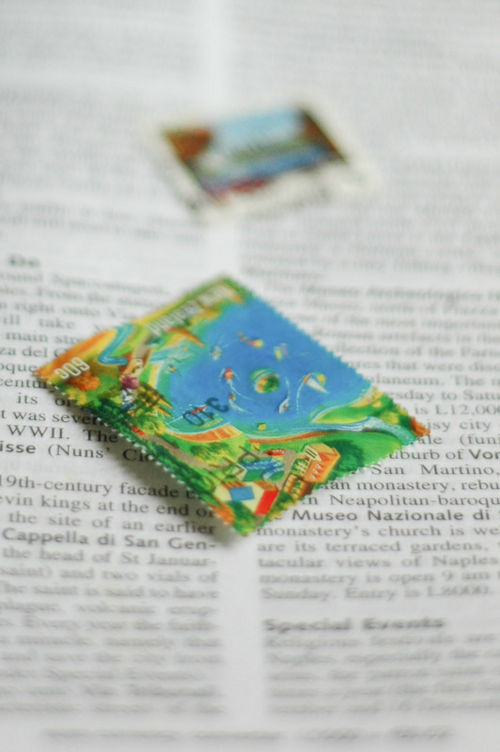 |
Place the now dry (and maybe a bit curled) stamps flat between the pages of a large book and weight them down if necessary
|
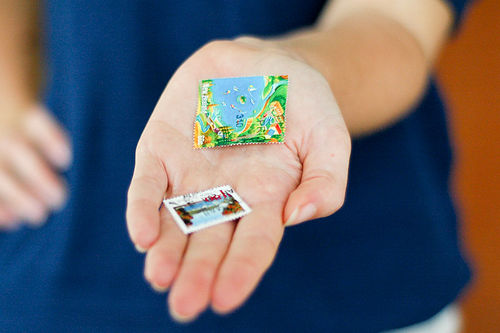 |
Leave them for 2-3 weeks to be very flat for handling and sorting into your collection, or for later use.
Remember to use tweezers to avoid damaging the clean stamps.
|
|
|

designed by KMcS, Dec 2009
